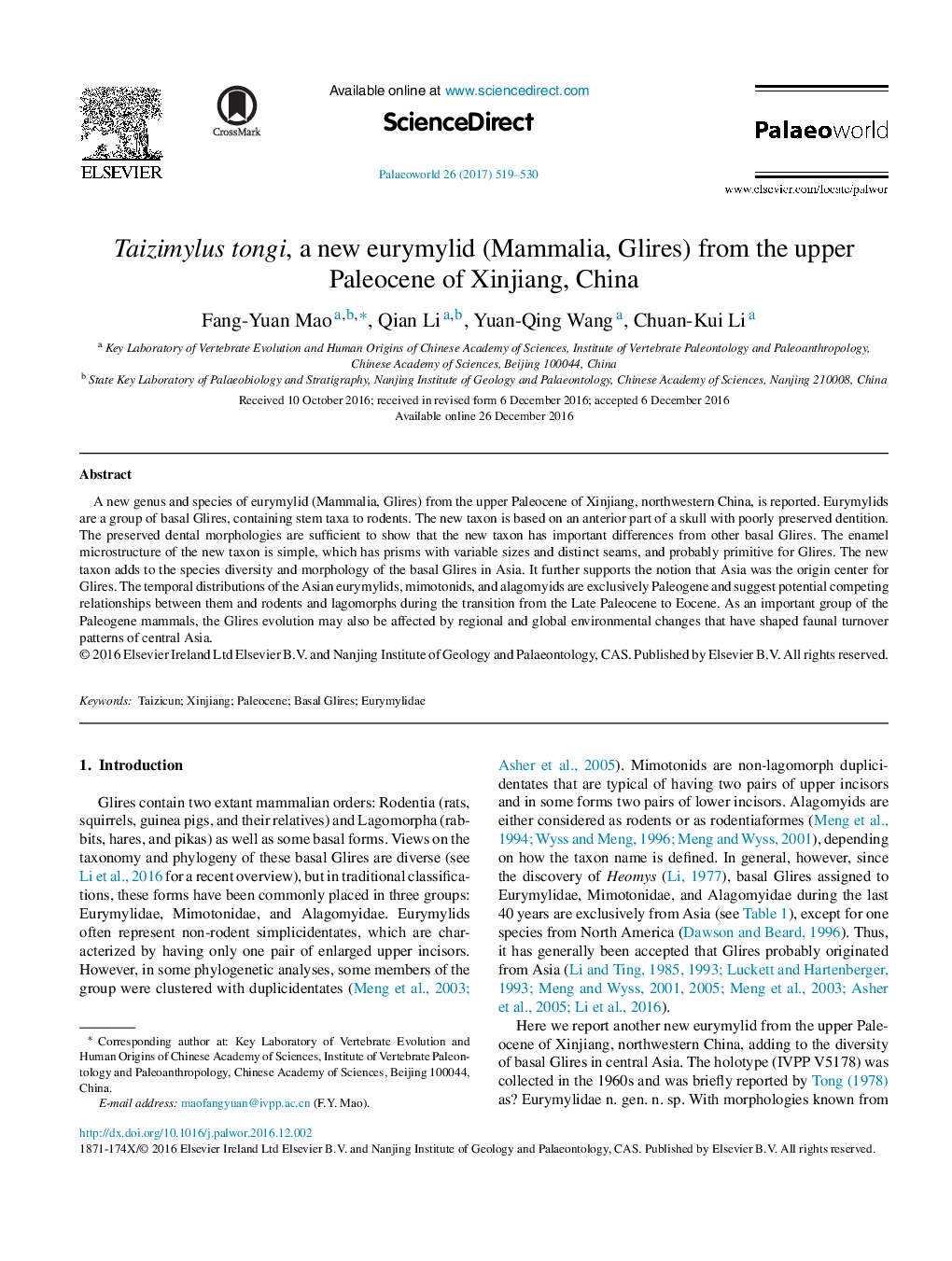| Article ID | Journal | Published Year | Pages | File Type |
|---|---|---|---|---|
| 5788219 | Palaeoworld | 2017 | 12 Pages |
Abstract
A new genus and species of eurymylid (Mammalia, Glires) from the upper Paleocene of Xinjiang, northwestern China, is reported. Eurymylids are a group of basal Glires, containing stem taxa to rodents. The new taxon is based on an anterior part of a skull with poorly preserved dentition. The preserved dental morphologies are sufficient to show that the new taxon has important differences from other basal Glires. The enamel microstructure of the new taxon is simple, which has prisms with variable sizes and distinct seams, and probably primitive for Glires. The new taxon adds to the species diversity and morphology of the basal Glires in Asia. It further supports the notion that Asia was the origin center for Glires. The temporal distributions of the Asian eurymylids, mimotonids, and alagomyids are exclusively Paleogene and suggest potential competing relationships between them and rodents and lagomorphs during the transition from the Late Paleocene to Eocene. As an important group of the Paleogene mammals, the Glires evolution may also be affected by regional and global environmental changes that have shaped faunal turnover patterns of central Asia.
Related Topics
Physical Sciences and Engineering
Earth and Planetary Sciences
Palaeontology
Authors
Fang-Yuan Mao, Qian Li, Yuan-Qing Wang, Chuan-Kui Li,
